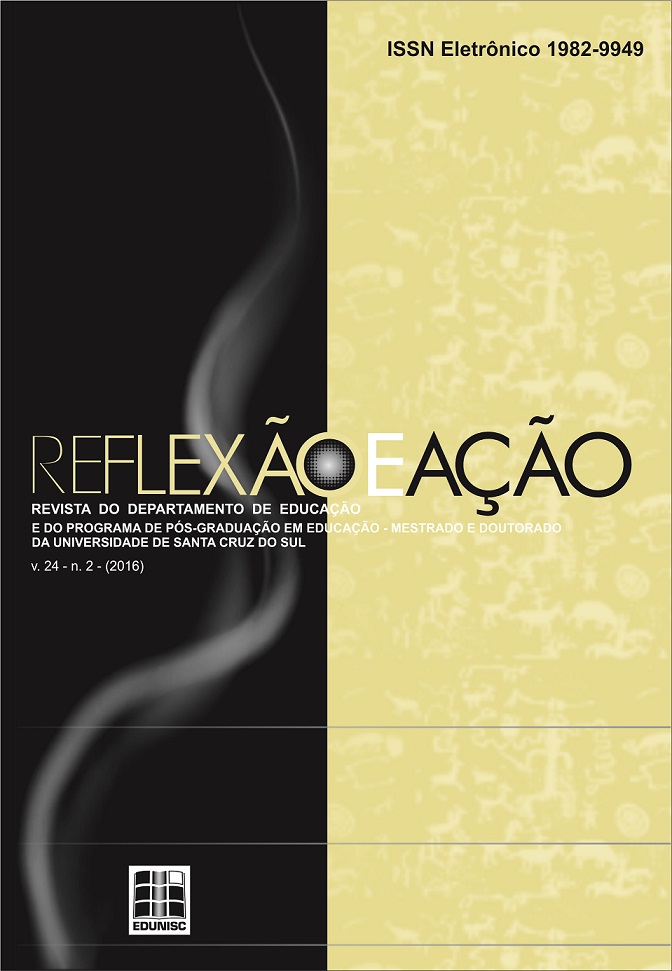STUDY ON THE ADOPTION OFBLENDED LEARNING IN K-12
DOI:
https://doi.org/10.17058/rea.v24i2.4933Keywords:
Virtual Learning Environments, Hybrid Education, Literature Review, Educational TechnologyAbstract
This paper presents a bibliographical research on the application of the methodology and technologies of distance education in the context of presential basic education. This is one of the stages of research project on the application of bimodal education on basic education held at the professional master's in education at the Federal University of Lavras. Search engines adopted were the Capes periodical portal and Google Scholar, covering the period 2009-2014 for the terms Bimodal Education, Education Courses in Basic Education Association. It was observed that, internationally, there is a clear trend of research in this area, verified by the number of articles on this topic. However the current focus is on higher education (77%) and education (13%). In the context of basic education (K-12) the research represent only 8% of the total. As the Brazilian reality, it became clear there is no uniformity in terms of use to indicate the convergence of classroom and distance learning, a fact that complicates the standardization of key words to search. It was also observed conceptual errors with use, for example, the term Bimodal Education to discuss education distance learning courses with more frequent face meetings. As for publications in Brazil, the situation shown precarious because the number is low and the majority comes to teacher training courses in semipresential and not of bimodal education. Therefore, it is considered that there is a need to move forward with research in this area.Downloads
Downloads
Published
How to Cite
Issue
Section
License
The submission of originals to this journal implies on the transference, by the author(s), of the printed and digital publishing rights. The author´s rights to the published articles are the author´s, the journal has the rights over the first publication. The author(s) can only use the same results in other publications, indicating clearly that this journal was the original publisher. Since we are an open access journal, the free use of articles is permitted for educational and scientific applications, as long as they inform the source according with the CC-BY license from Creative Commons.


